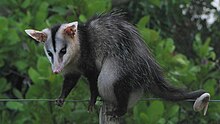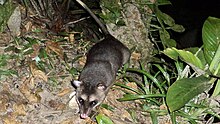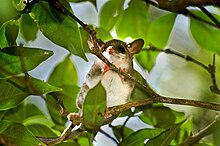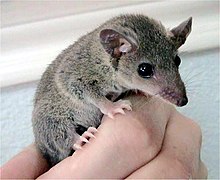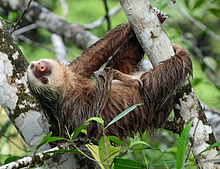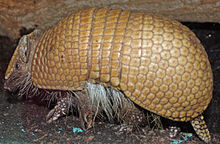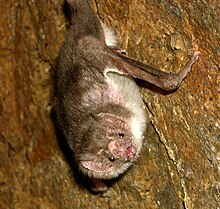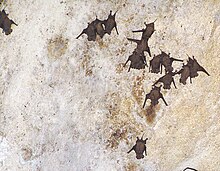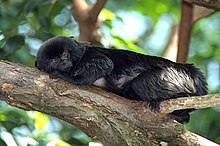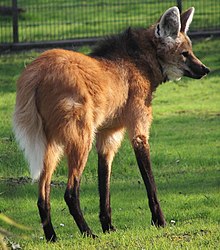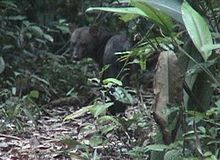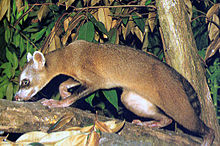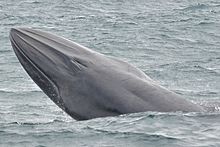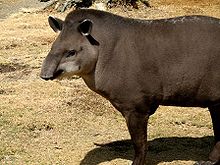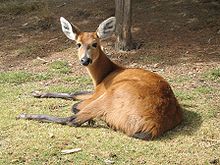Brazil has the largest mammal diversity in the world, with more than 600 described species and more likely to be discovered. According to the International Union for Conservation of Nature, 66 of these species are endangered, and 40% of the threatened taxa belong to the primate group.
658 species are listed.[1]
The following tags are used to highlight each species' conservation status as assessed by the International Union for Conservation of Nature:
| EX |
Extinct |
No reasonable doubt that the last individual has died.
|
| EW |
Extinct in the wild |
Known only to survive in captivity or as a naturalized populations well outside its previous range.
|
| CR |
Critically endangered |
The species is in imminent risk of extinction in the wild.
|
| EN |
Endangered |
The species is facing an extremely high risk of extinction in the wild.
|
| VU |
Vulnerable |
The species is facing a high risk of extinction in the wild.
|
| NT |
Near threatened |
The species does not meet any of the criteria that would categorise it as risking extinction but it is likely to do so in the future.
|
| LC |
Least concern |
There are no current identifiable risks to the species.
|
| DD |
Data deficient |
There is inadequate information to make an assessment of the risks to this species.
|
Some species were assessed using an earlier set of criteria. Species assessed using this system have the following instead of near threatened and least concern categories:
| LR/cd |
Lower risk/conservation dependent |
Species which were the focus of conservation programmes and may have moved into a higher risk category if that programme was discontinued.
|
| LR/nt |
Lower risk/near threatened |
Species which are close to being classified as vulnerable but are not the subject of conservation programmes.
|
| LR/lc |
Lower risk/least concern |
Species for which there are no identifiable risks.
|

